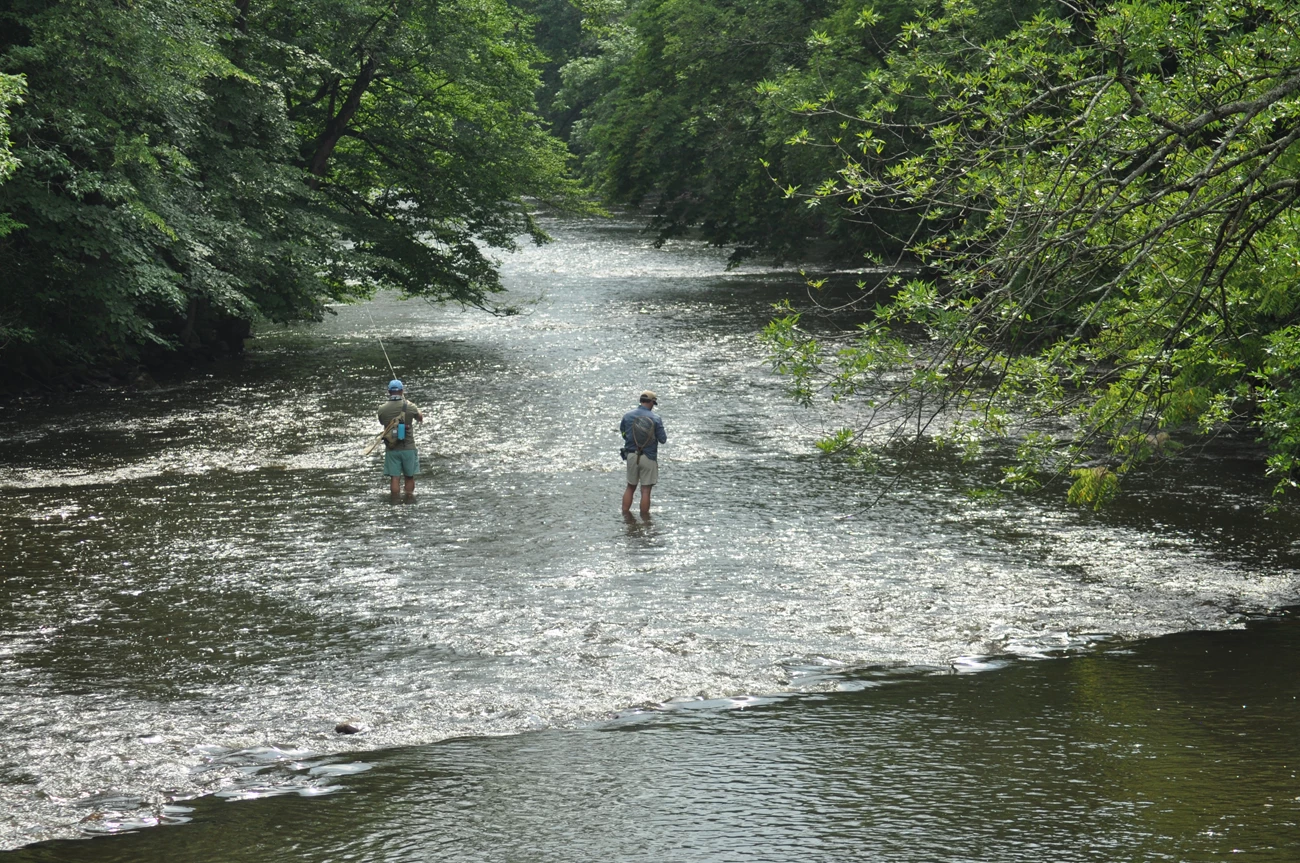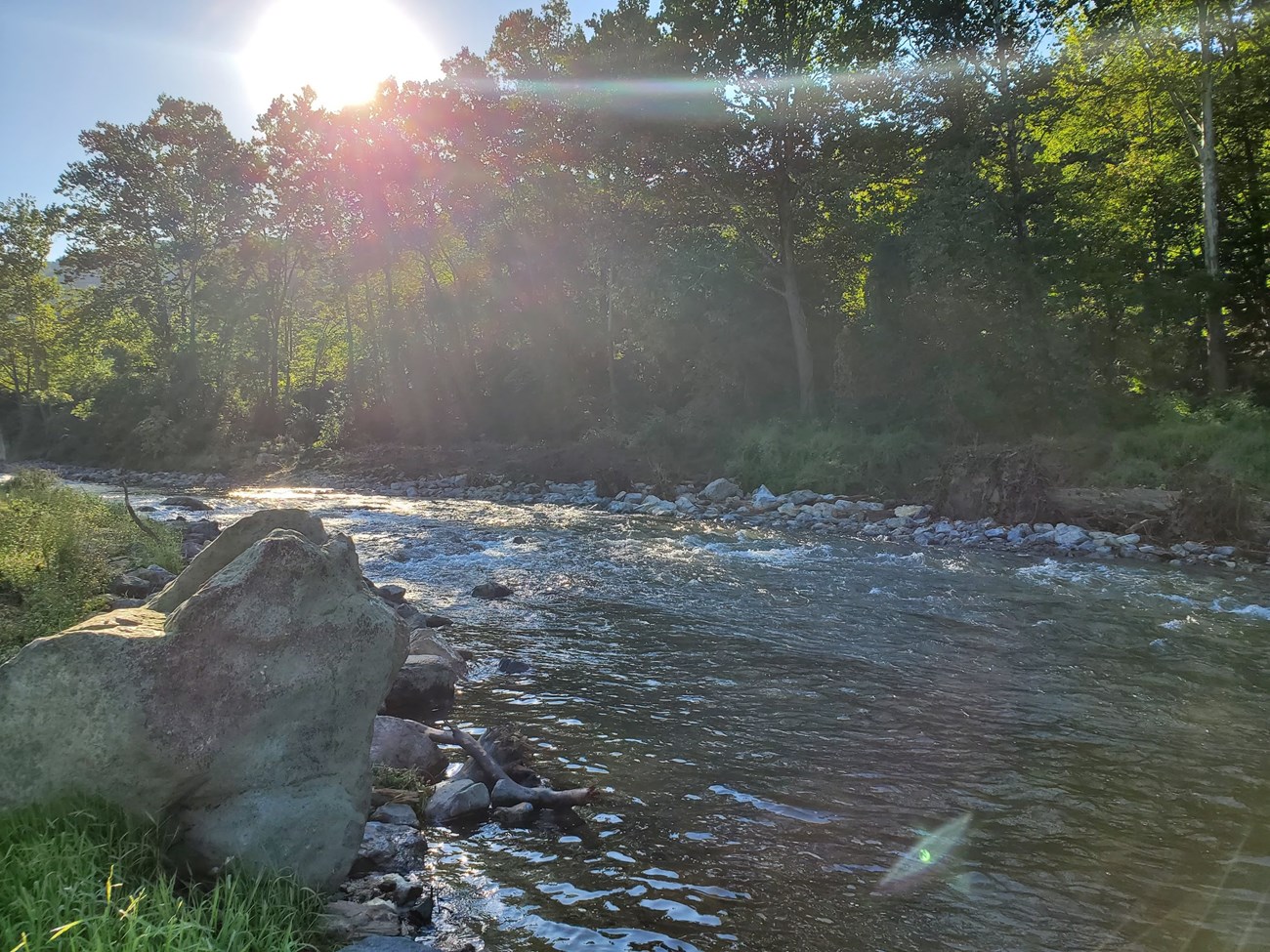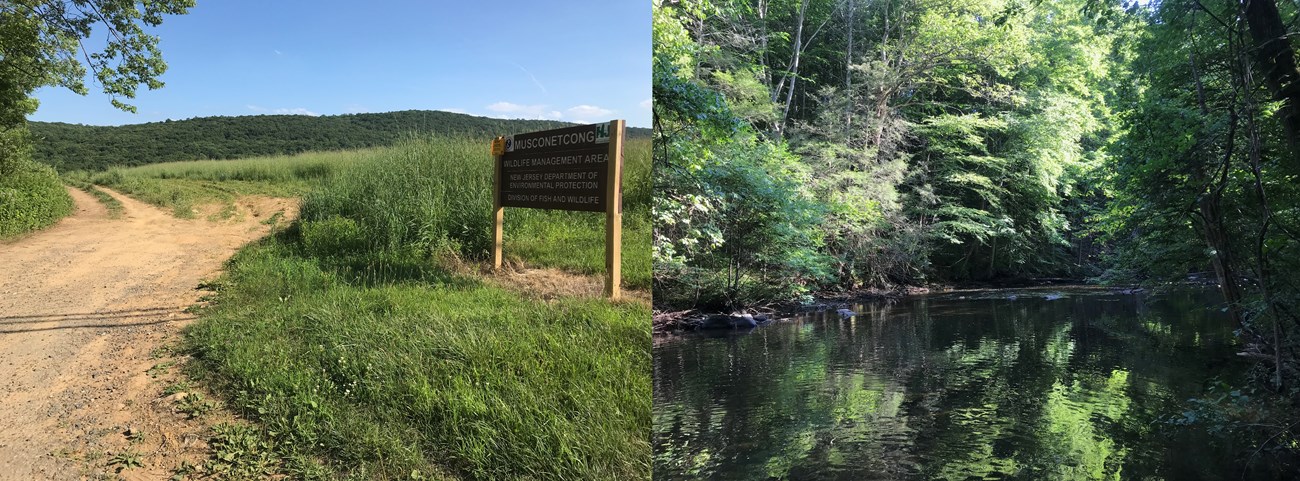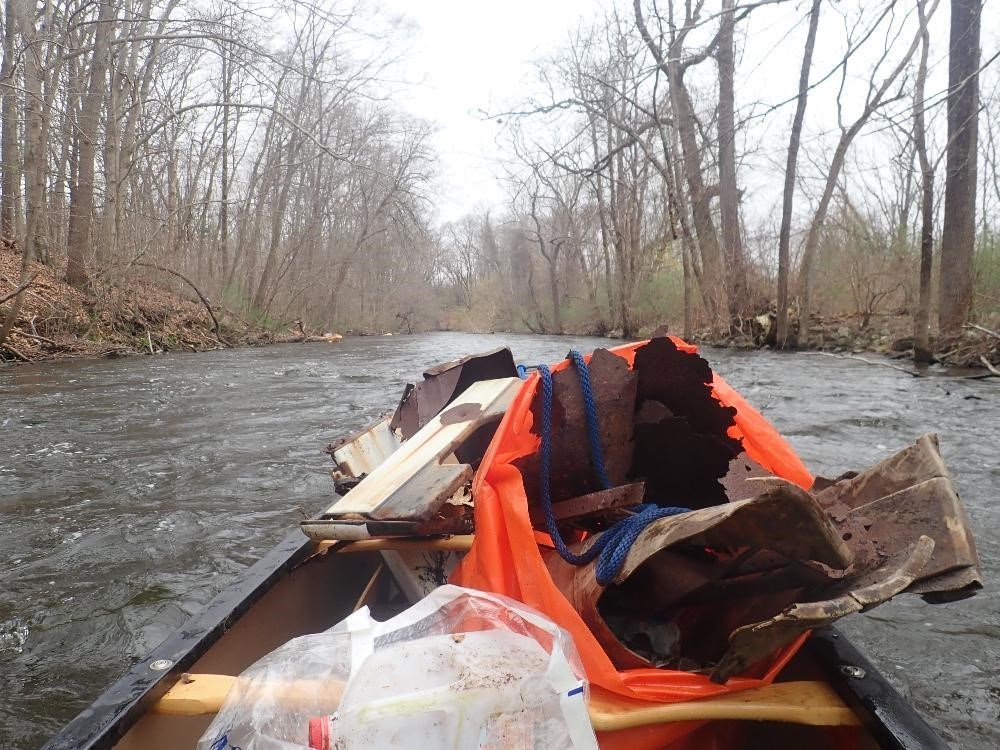Last updated: January 4, 2021
Article
Recreation | Musconetcong
by Cassidy Quistorff, NPS Communications Fellow
The National Park Service does not own or manage facilities on Partnership Wild and Scenic Rivers. Recreational access is instead variously provided by municipalities, states, outfitters, and other riverfront landowners. On the Musconetcong River, most public access is provided by the State, through State Parks, Wildlife Management Areas, and other small parcels.
On the Musconetcong River in New Jersey, there are 60 access points over 42 river miles. These access points are a part of the public lands along the River, many of which have been acquired through state agencies and programs. With more river users, from paddlers to fishermen, it can be difficult to maintain these areas. Partnerships can help offer unique solutions when it comes to the intersection of conservation, recreation, and management.


Susan Predl believes in the importance of access along rivers. Susan, the Regional Superintendent with the Bureau of Land Management in NJ’s Division of Fish and Wildlife, works on access points within Wildlife Management Areas. With 357,000 acres in 122 different Wildlife Management Areas in the State of New Jersey, there’s a lot to maintain. The Musconetcong River Wildlife Management Area is 1,648 acres made up of 12 different non-contiguous parcels.
Susan explained how they work to acquire land that can then be beneficial to the Musconetcong River, often through NJ’s Green Acres program. “We buy small properties along the river. [We have] mostly purchased those areas to provide fishing access. We buy these lands to provide access for the rivers. But it doesn’t just provide access, it maintains the health of the river by keeping out those impermeable surfaces and keeping the trees, roots, and soil there to filter the water that flows into the river.”
Like many recreational areas, the Musconetcong was also impacted by more people coming out on the water this summer. “We’ve seen increased use...but often crowds bring trash and loud music. They’ll use the rivers for swimming but don’t leave it in the pristine way we’re used to seeing. I’d like to think that perhaps something good will come of it when the kids turn into environmentalists and remember fondly the times they had in the great outdoors,” Susan hoped. “Everyone has a right to enjoy public lands,” Sue noted; we need to use our resources to be sure that the use is sustainable. Sue is “proud to be a part of proving access” to the Musconetcong Wild and Scenic River.

River access for recreation, including fishing and boating, is appreciated by those in the watershed. In the Musconetcong River, there are a variety of fish that lure anglers of all kinds to their waters. Brown trout, brook trout, largemouth and striped bass, sunfish, and catfish are all habitants of the river. In addition, rainbow trout are stocked annually. Shad have returned to the river since the removal of a downstream dam, and all are encouraged to report any shad caught to the Musconetcong Watershed Association (MWA).
Christopher Meyers, member of the MWA and Mohawk Canoe Club (MCC), has been working towards imparting his knowledge of paddling the Musconetcong with others. Through a MCC grant-funded project, a Musconetcong paddling guide that Christopher helped write, was recently published.
In addition, Christopher also helps lead river cleanups. Unfortunately, the cleanup, as well as canoe trips with car shuttles, have been cancelled this year. “Out of an abundance of caution, we’ve stopped doing car shuttles this year… The club is only running trips that you can take out at the same place you put in.” that hasn’t stopped this avid paddler from getting out and enjoying “his favorite river.”

The strong partnerships that support the hard work of the Musconetcong Watershed Association (MWA) have resulted in a prestigious achievement, the Musconetcong Watershed National Water Trail has been added to the National Trails System. National Water Trails were established to protect and conserve the nation’s waters, and are a distinctive national network supported and sustained through cooperative efforts. The MWA, along with partners from the MCC, Lake Hopatcong Foundation (LHF), and Warren County have been using their combined efforts to create a National Water Trails brochure, as well as online interactive story map which will soon be published, to help locate the over 50 public access points. Many of those access points are on lands acquired through the Green Acres Program.
The U.S. Secretary of the Interior David L. Bernhardt designated the Musconetcong Watershed National Water Trail to the National Trails System in November 2020. This designation comes from the National Trails Act of 1968, which calls for establishing trails in both rural and urban areas. To celebrate this, the Musconetcong Watershed Association (MWA), along with partners from the Lake Hopatcong Foundation (LHF), Warren County, and Mohawk Canoe Club have been working together to create a National Water Trails brochure and online interactive story map to help locate the over 50 public access points.
“I am so pleased that the Musconetcong River has been has been recognized by the US Department of the Interior,” said James Kern, Warren County Freeholder, “The tireless work of the MWA’s staff and volunteers has no doubt lead to this worthy designation. Warren County will continue to support efforts and partner with all stakeholders to protect this scenic and recreational natural resource.”
The Musconetcong National Watershed Trail provides information on 11 water trail trips, which can be combined into longer trips. This includes four trips on Lake Hopatcong, one trip on Lake Musconetcong, and six trips on the Musconetcong River, including the possibility for overnight camping at Stephens State Park. Joining this network of trails helps promote the preservation and public access of our outdoor spaces.
“We thank Secretary Bernhardt for recognizing the beauty and recreational opportunities in the Musconetcong Watershed. We hope the National Water trail designation encourages people to enjoy, be inspired by, and ultimately engage with us in protecting our region’s rustic and rural character. The National Water Trail designation will help raise awareness of tourism opportunities that support regional economic development goals of our County partners,” said Alan Hunt, Director of Policy at Musconetcong Watershed Association.
“We are pleased to have collaborated with the Musconetcong Watershed Association and the other partners on this water trails project and look forward to future cooperative efforts,” said Cliff Lundin, Lake Hopatcong Foundation recreational trails committee chair. “This prestigious national designation recognizes Lake Hopatcong as a primary recreational waterways, not only with the Musconetcong Watershed, but within the nation.”
“This rare designation was the result enormous efforts from all levels of government, federal, state, county to local municipalities,” said Steven Rattner, Morris County Planning Board, “All of this would have not been possible without the labor and financial support of numerous not for profits, sportsmen groups, environmental groups and foundations. When partnerships like this gel, everything is possible and the public benefits.”
The National Trails System encourages those of all ages, interests, skills, and physical abilities to explore and appreciate this system of national scenic, historic, and recreation trails.
The Green Acres program is a program of the New Jersey Department of Environmental Protection and plays a key role in land acquisition along the Musconetcong. “The properties that we’re most interested in acquiring are those that provide habitat, both for common wildlife species or threatened and endangered species, or that provide fishing and hunting access,” said Susan Predl. This makes the Green Acres Program an ideal tool for the Musconetcong Watershed Association, as well as other organizations such as the New Jersey Audubon Society, to preserve lands.
Susan, her colleagues, and their partners continue to work towards conserving the land while promoting public access to its natural wonders. “It’s great to have a beautiful, clean, Wild and Scenic River, but if it is all privately owned, only few get to appreciate it. We need public access, which NJDFW is proud to provide.”
